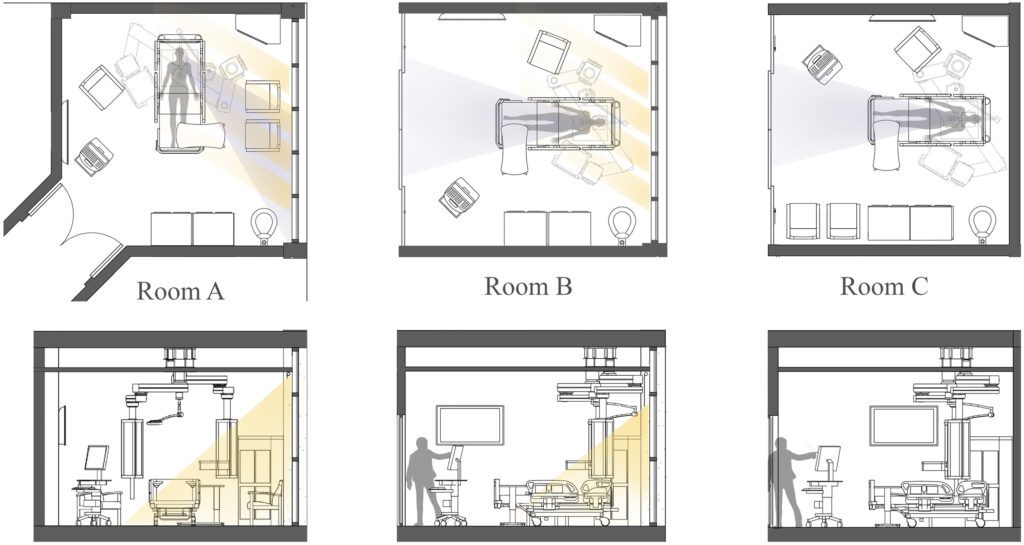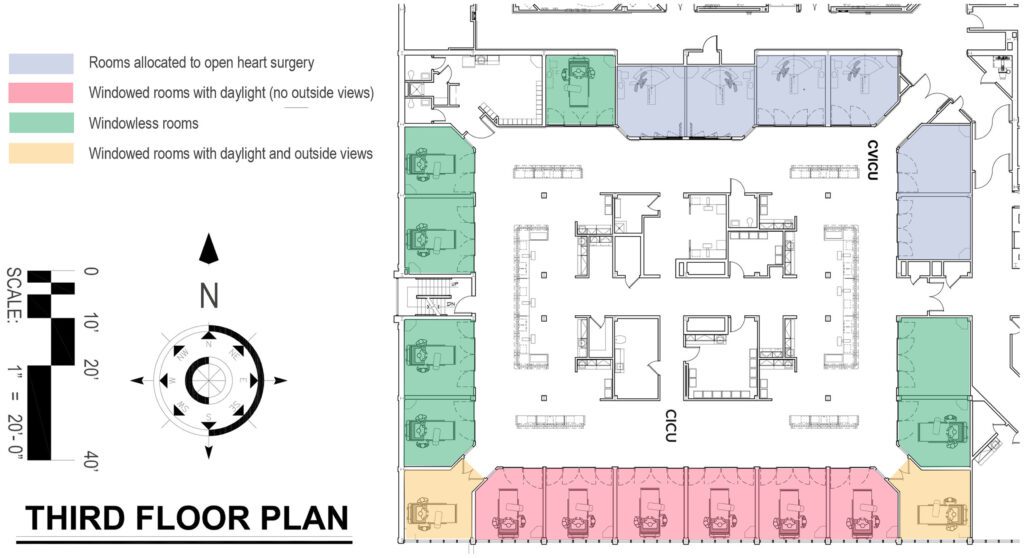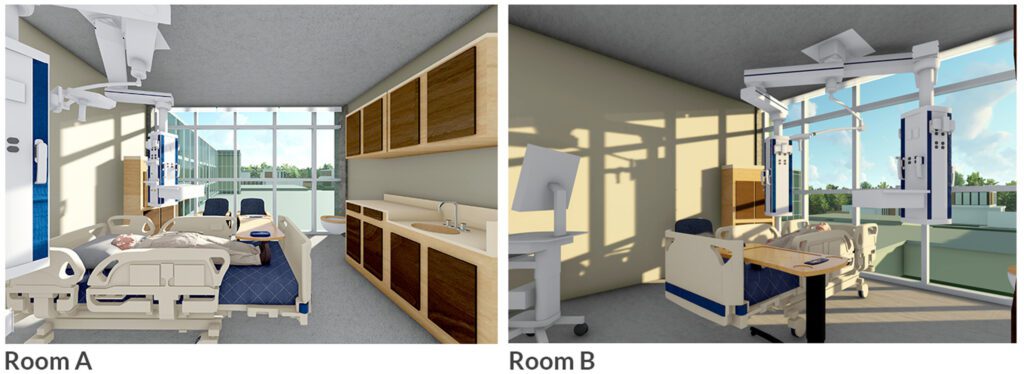A Clemson School of Architecture alumna and faculty member found that hospital room design, access to daylight and window views of nature can reduce the length of hospital stays among patients with heart disease.
Roxana Jafarifiroozabadi, a former Doctoral student of the Planning, Design and the Built Environment program alongside professor Anjali Joseph, Director of the Center for Health Design and Testing and Andrea Franks, Nurse Manager for the Clinical & Nursing Research Department at AnMed Health, researched and discovered that access to daylight and window views can reduce the stay of a patient in the cardiac intensive-care unit (CICU) by 16.8 hours, and in some cases reduce the stay by approximately one day.

The study, published in the Journal of Intensive Medicine, began when Jafarifiroozabadi learned that nurses in a medical center in South Carolina noticed differences in the health outcomes of patients in different rooms of the CICU. Nurses suspected that patients recovered fastest in rooms with daylight and window views, but couldn’t quantify or explain the differences in outcomes.
“The study is unique in that we have some patients whose beds are oriented so that they can look outside the window, some whose beds are oriented where the window is behind them so they can experience the daylight, but they can’t really see the view, and some patients who have neither window views nor daylight,” said Joseph.
According to Joseph, previous research has examined how views of nature and daylight can positively impact patient recovery. Yet, the research still needed to delve into the interplay between factors and the length of stay in the CICU environment. Additionally, earlier studies didn’t measure the amount of daylight and couldn’t tease out whether daylight or nature views were more impactful on the patient’s recovery.
The unique layout of the medical center, combined with rigorous criteria for patients to be a part of the study, led Jafarifiroozabadi and Joseph to study the direct effects of different daylight levels, window views, and patient bed orientation toward the windows on 2,319 patients with heart disease.

Among the patients assigned to CICU rooms, 12% of the CICU patients were hospitalized in type A rooms, where the patient bed is parallel to the window with access to daylight and window views. 42% of patients were hospitalized in type B rooms, where the head of the patient bed is against the window with access to daylight but no access to window views, and 46% of patients were hospitalized in type C rooms, which did not have a window.
The study found that the average CICU length of stay for patients in type A rooms was 2.8 days, while type B rooms were 3.1 days and type C rooms stayed for 3.5 days. On average, patients in type A rooms stayed 19.2 hours and 12 hours less in the CICU than in type C and B rooms. Additionally, the study showed that patients with access to daylight and window views in type A rooms had significantly reduced stays among patients with symptoms of delirium or dementia, those with a history of anxiety or obesity, and those receiving palliative care or mechanical ventilation, compared to patients without access to windows.
“In a healthcare context, even a few hours less time in a patient’s length of stay means a lot of cost savings for the hospital in terms of hospitalization and medication,” explained Jafarifiroozabadi. “Also, from the patient’s point of view, an additional length of stay in hospitals can increase risks of hospital-acquired infections, which is why hospitals are trying to decrease the length of a patient’s stay.”
Jafarifiroozabadi and Joseph also compared type A rooms, with access to daylight and window views, to type B rooms, with access to daylight but without window views. They found that the availability of window views, in addition to daylight, significantly reduced the CICU length of stay among patients with symptoms of dementia, a history of obesity and those receiving palliative care.

“When we are designing rooms with windows, what really matters is how we are using that window to make the most impact on the occupant,” said Jafarifiroozabadi. “When we are talking about patients who are unable to adjust the blinds or adjust the amount of daylight coming in, it is really up to the caregivers and hospital to optimize that environment for the patients. “
The researchers believe that the findings of their study can help hospital stakeholders, architects, and medical planners determine room layouts that are conducive to patient recovery and maximizes the efficiency of windows in CICUs.
While there are limitations to the research, Jafarifiroozabadi and Joseph recommended that future researchers investigate two different variables. First, the impact of daylight and window views on heart disease patients who have undergone surgery, or second, examine the effect of lighting color, different views (nature vs. urban) and differences in the duration and time of direct daylight exposure on CICU patients.
Get in touch and we will connect you with the author or another expert.
Or email us at news@clemson.edu

